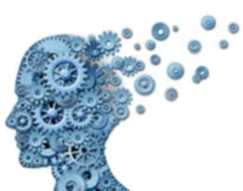 Researchers and clinicians in the field of addiction are discovering and discussing a long-known but here-to-for unnamed phenomenon in addiction, called Addiction Memory. We first used this term in our work eight years ago to describe a clinical phenomenon, whereby an individual who suffers from addiction has a specific, hard-wired recall of an addiction related euphoric event (or conversely, a horrid event) that was associated with drug or alcohol use. The event had to overwhelm normal memory channels, producing a memory video clip that the recovering addict cannot shake off. The intense replay of such memories haunts the recovering addict and produce relapse in its hapless victims. We noted its presence in some but not all drug and alcohol abusers, but especially in those who abuse rapid onset drugs (such as IV methamphetamine, crack and heroin). We have also noted that it appears more often in patients who have been the victims of trauma.
Researchers and clinicians in the field of addiction are discovering and discussing a long-known but here-to-for unnamed phenomenon in addiction, called Addiction Memory. We first used this term in our work eight years ago to describe a clinical phenomenon, whereby an individual who suffers from addiction has a specific, hard-wired recall of an addiction related euphoric event (or conversely, a horrid event) that was associated with drug or alcohol use. The event had to overwhelm normal memory channels, producing a memory video clip that the recovering addict cannot shake off. The intense replay of such memories haunts the recovering addict and produce relapse in its hapless victims. We noted its presence in some but not all drug and alcohol abusers, but especially in those who abuse rapid onset drugs (such as IV methamphetamine, crack and heroin). We have also noted that it appears more often in patients who have been the victims of trauma.
Memory and learning are also intimately involved in addiction in other ways as well. In 2005, Dr. Steven Hyman from NIMH describes the importance of memory circuits and learned behavior in a fine synthetic article titled Addiction: A Disease of Learning and Memory. The importance of the multiple types of learning in the genesis and re-enactment of addiction behaviors is an important and expanding topic.
We proposed that one specific type of memory (Addiction Memory) uses the same neural circuits that are responsible for Post Traumatic Stress Disorder. The PTSD response is generated when an experience overwhelms our collector of day to day memories. Normally, the hippocampus in our brain (with support from many structures in the cortex and cerebellum) records or experience for learning and adaptation of the human organism. However, when physical and sexual abuse, auto accidents, war-related events and tragic, unexpected deaths of loved ones occurs, the standard memory collection system becomes overwhelmed. A different type of memory circuit is engaged which results in the clinical phenomenon: Post Traumatic Stress Disorder. Several things occur when the "PTSD memory circuit" engages. The first is the experience is recorded into a slow-motion high definition video recorder in the mind. Time slows down. Emotions curiously extracted from the recording, but come back later during the playback of PTSD memories. The memory stays stuck in the head, and its playback is triggered erratically, often by seemingly unrelated day-to-day events. However, the worst part of such memories is that they stay in this video clip format, and do not become integrated into our episodic memory. Meaning and connections with related content does not occur (some say this occurs during REM sleep). This "contextualizing" of past memories helps us learn and evolve. When this contextualizing process (into episodic memory from short term memory) fails, the victim of PTSD is more prone to repeat the event; they have not learned from the event. This is one of the reasons victims of PTSD are prone allow themselves to be revictimized by trauma. Retraumatization and compulsive reenactment of traumatic incidents occur for other important reasons as well, some off which involve an interaction with the brains important reward circuitry.
In the same way, we posit, the addict who injects or smokes cocaine (for example) has a dark video clip wired into his or her brain. The video clip recalls extensive detail about the event with euphoric, but scary emotions when it plays. The human brain was not designed to make sense of intense drug experiences. As they become more intense the mind cannot process and conceptualize the life threatening aspects of the drug high. The memories are retained as important experiences for the addict, partly because the drug-induced euphoria is so strong and partly because the PTSD-like Addiction Memory tapes are not incorporated into normal memory after the drug use event occurs. The addict is pummeled when these tapes replay, often at vulnerable moments in recovery.
We have also noted that coupling frightening events with drug and alcohol use seems to produce a similar Addiction Memories. Our patients who take an unintentional overdose of cocaine become frightened feel that death is near and have a life traumatizing memory as a result. If they survive and enter treatment, we can detect a pathological and euphoric attachment to this event. Paradoxically, the frightening quality of a near-death experience produces an attachment to, instead of the expected revulsion away from the drug.
How can we use this understanding of Addiction Memory to increase the effectiveness of treatment? It is too early to come to any firm directions for the responsible clinician. In our treatment training, we are exploring using the traditional tools for PTSD treatment. Dr. Shapiro's Eye Movement Desensitization and Reprocessing (EMDR) technique shows early promise in decreasing the severity of haunting Addiction Memories. Reprogramming the brain through virtual experiences, and pairing the trauma memories with recovery skills may also help. If nothing else detecting such memories in your patients and normalizing them is a great start to help their recovery.
Hyman, S. Addiction: A Disease of Learning and Memory. American Journal of Psychiatry 2005; 162:1414-1422.